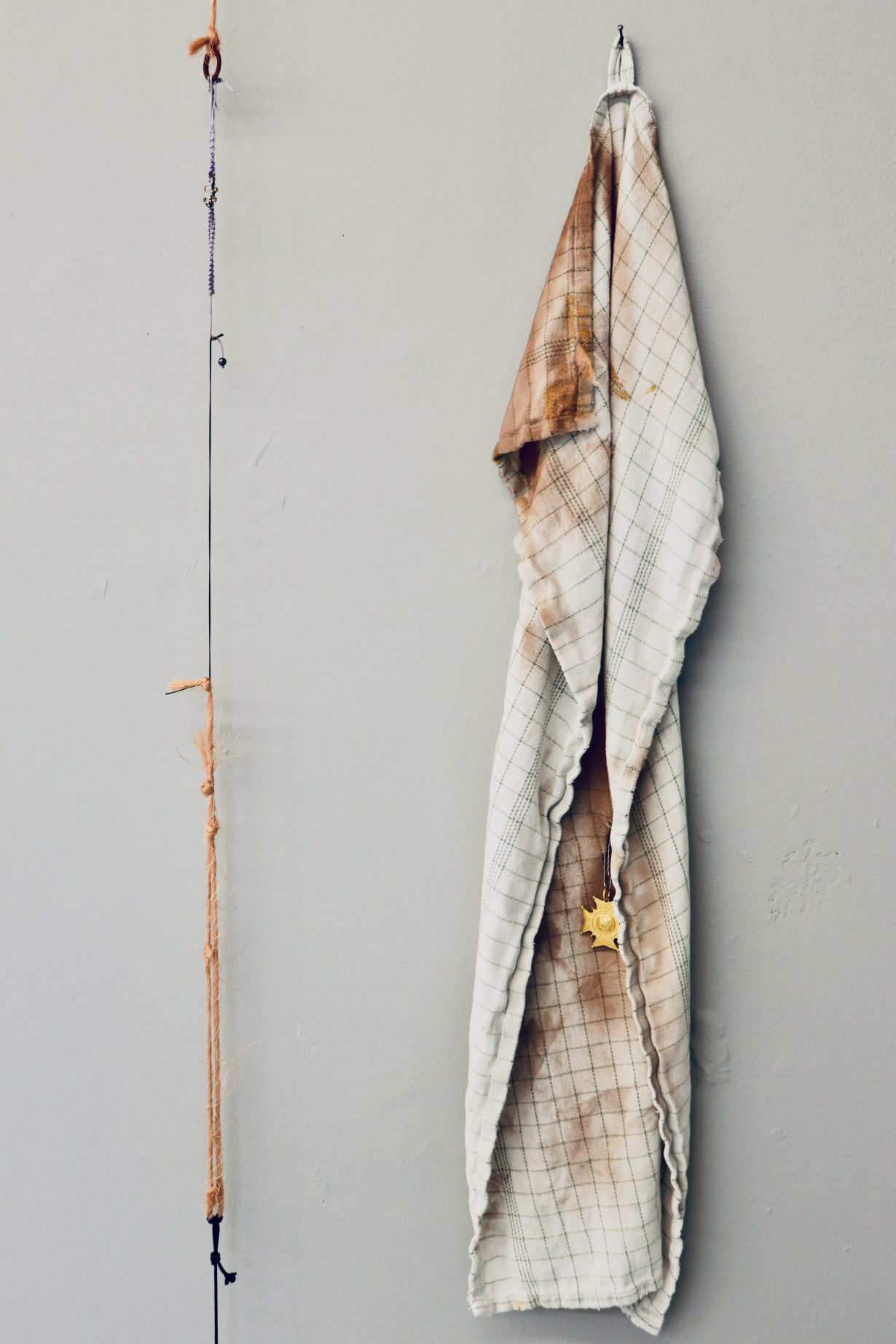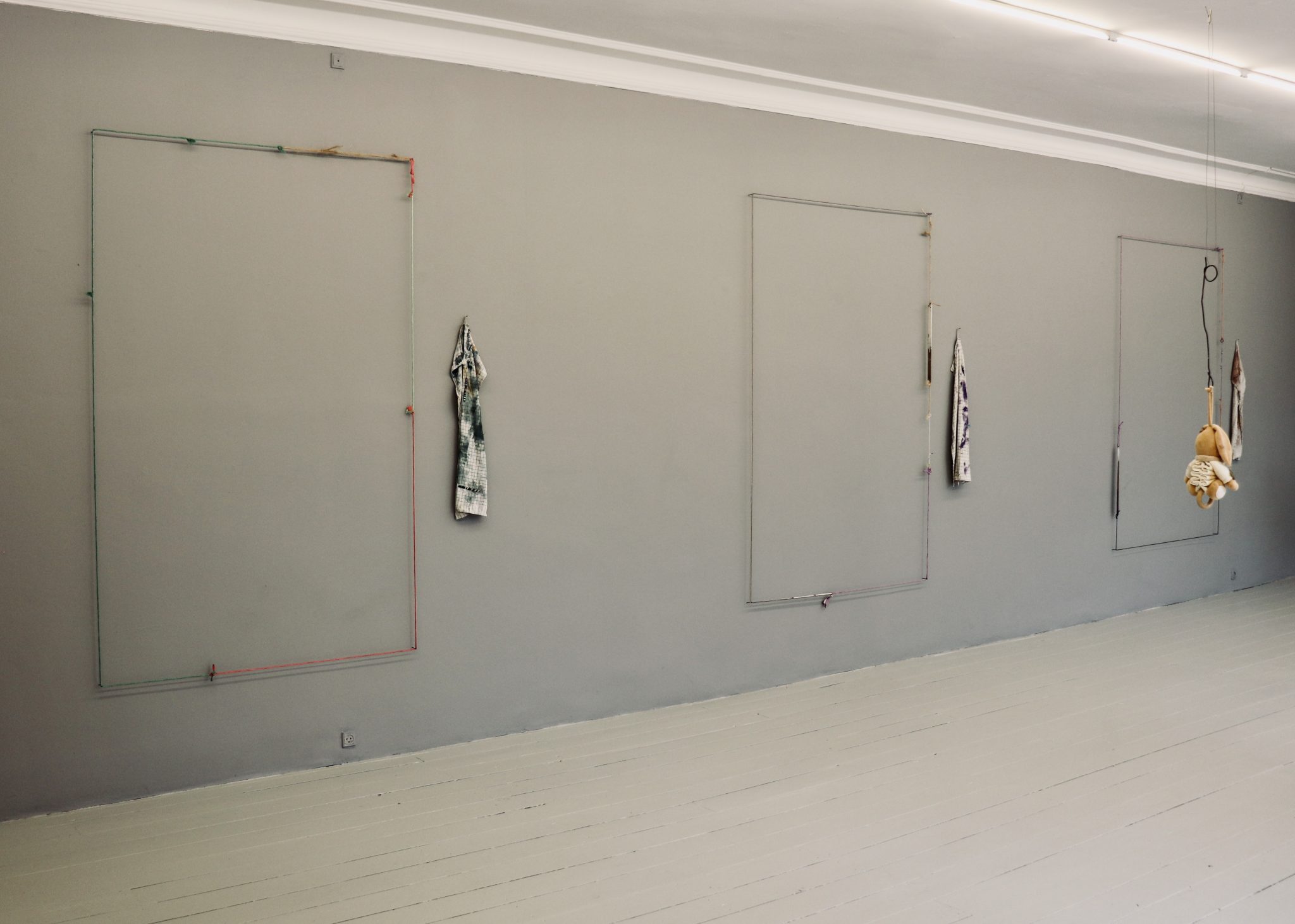A confidently scruffy exhibition presents skewed domestic scenes with sensitivity and indifference to material value
We all have certain ideas, often quite entrenched ones, about which worldly objects are precious and which aren’t. And plenty of artworks produced during the past century have attempted to change those ideas; some have even succeeded. Today, any kind of found scrap can be read as sculpture, and yet, despite that, used and stained dishcloths hung on hooks as if by a sink actually do come off as relatively lowkey pieces of homeware. On entering Finn Reinbothe’s confidently scruffy exhibition – in the fanciest, most beige part of central Copenhagen – such dishcloths immediately leap out at you; they are eyecatching in their lowliness, but so is an unmissable sense of preciousness. These worn-out kitchen essentials hang beside large, framelike rectangles of taut string pinned to the wall, but the result doesn’t feel like you’re looking at conceptual absence, it feels like looking at emotional saturation: occasionally, little pieces of jewellery pierce the pieces of fabric, and come off as traces of missing loved ones. Campy kids’ earrings and charms, possibly fake medals, serve as hints at decoration that the imageless frames are lacking.

A trashed stuffed toy rabbit hanging from the ceiling (Rabbit music (Nike), all works 2022) adds to the strong vibe of a skewed domestic scene. It’s the type of generic teddy where pulling a string makes it play rusty lullabies, pointing towards missing infants; but even when such traces of horror are unambiguous, the atmosphere oozing from the sexagenarian Danish artist’s consciously mundane works seems primarily affectionate. For several decades, Reinbothe’s practice has involved bland found objects galore, but in this show the normcore stuff comprising his pieces also features something that seems to have been owned, probably treasured – the dirty dishcloths are stained significantly with paint, the jewellery might have belonged to children or grandchildren. See, for example, the mobile Untitled (Sad song), where a perforated sheet of leftover metal is subtly embellished with pearls and cheap-looking gold, and feels transformed into a quiet yet pristinely bleak memorial. In other words: nostalgia is real here, but not in a performative way and not in the shape of ironic, millennium-era aesthetics.
Over and over, MORE SAD LOVE SONGS walks a fine line with impressive precision: it implies longing but never comes off as sentimental, is opaque but not pretentious, fun but not overtly ironic, shabby but not gestureless. Every juxtaposing decision, even the most imperceptible, has clearly been taken with attentive, sculpture-minded eyes – eyes that seem to conceive art in general as a result of seeing rather than a mode of producing. And such eyes, Reinbothe’s art suggests, are probably always capable of looking at the world with a particular tenderness, indifferent to material value.
MORE SAD LOVE SONGS (on a grey background) at Avlskarl Gallery, Copenhagen, 27 January – 18 March
